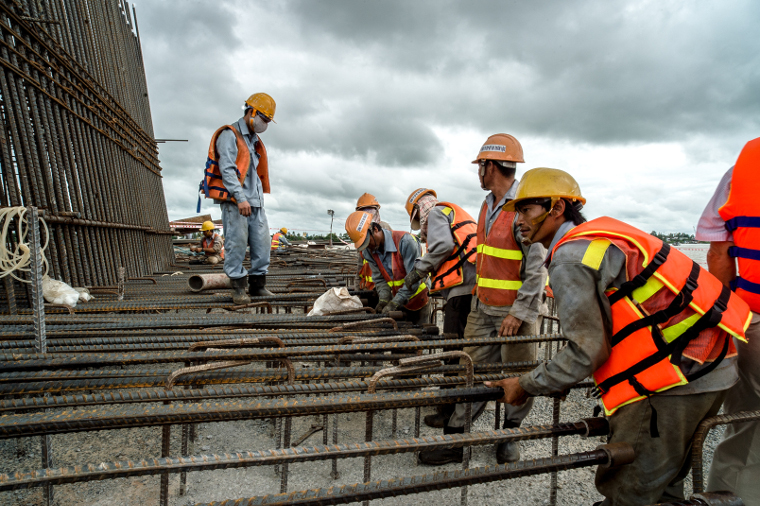Mekong Senior Officials to Discuss Initial Findings of Midterm Review

Workers build a bridge across the Mekong River. Photo: ADB.
This July, senior officials of the Greater Mekong Subregion (GMS) will discuss the initial findings of the taskforce reviewing the program’s progress. The GMS Senior Officials Meeting will be held on 6 July 2017 in Thailand’s capital Bangkok.
The midterm review of the GMS Strategic Framework 2012–2022 started with an assessment of the economic performance of the six Mekong countries and the challenges and prospects they face in the context of regional and global developments. The GMS countries are Cambodia, People’s Republic of China (specifically Yunnan Province and Guangxi Zhuang Autonomous Region), Lao People’s Democratic Republic, Myanmar, Thailand and Viet Nam.
The two-month country consultations, which kicked off in February, also solicited information, suggestions and guidance from key stakeholders toward formulating the Ha Noi Plan of Action 2018-2022, which will be presented at the 22nd Ministerial Conference in Viet Nam in September.
The midterm review task force also conducted focus group discussions with GMS sector working groups and forums in April and May.
As part of stocktaking, the midterm review is also examining the role of regional cooperation in the Greater Mekong Subregion, focusing on new drivers and gaps that need to be addressed. It will map out the way forward for the remaining years of the 10-year plan, including the required adjustments and refinements, and an indicative timeline of major milestones.
The Strategic Framework 2012–2022 was adopted at the 4th GMS Summit of Leaders in Nay Pyi Taw, Myanmar in December 2011. It calls for a range of measures to strengthen regional cooperation, including more effective resource utilization and more careful balancing of development with environmental concerns. This is the second strategic framework under the 25-year-old program, and was formulated in the years following the 2008 global financial crisis. It reaffirmed the visions and goals of the first 10-year strategy and introduced the following refinements:
- establish a closer link with the broader regional integration agenda, thus accelerating the subregion’s integration with the rest of Asia;
- focus more effectively on the software aspects to complement the continued focus on hardware initiatives as a means of deepening connectivity and fostering mobility; and
- promote closer links within sectors for greater synergy.
Learning from the global financial crisis, the GMS countries moved toward strengthening domestic and regional markets in the face of prolonged sluggish growth in developed economies.The midterm review is being conducted under the supervision of the Asian Development Bank, which serves as the secretariat for the GMS Program, and in close coordination with the GMS national coordinators.
Last Updated: 26 June 2017
